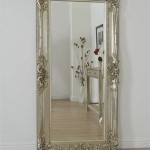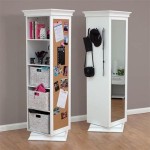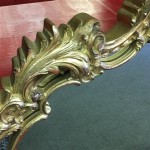How to Glue a Bathroom Mirror: A Comprehensive Guide
Securing a bathroom mirror properly is crucial for both safety and aesthetics. A firmly attached mirror prevents accidents and enhances the overall look of the bathroom. Understanding the correct procedures, materials, and safety precautions are essential for a successful installation.
This article provides a detailed guide on how to glue a bathroom mirror to the wall, outlining the necessary steps, from surface preparation to adhesive application and support measures. It emphasizes the importance of selecting the right adhesive and taking accurate measurements. Following these guidelines will ensure a secure and long-lasting installation.
Key Point 1: Preparation is Paramount
The success of gluing a bathroom mirror hinges on meticulous preparation. This encompasses selecting the appropriate mirror, cleaning the mounting surface rigorously, and gathering all the necessary tools and materials. Inadequate preparation can lead to adhesion failure and potential hazards.
Mirror Selection: The thickness and dimensions of the mirror are critical factors. Thicker, larger mirrors require stronger adhesives and potentially more support. Consider the weight of the mirror and ensure the chosen adhesive is rated to handle that load. Also, assess the mirror's backing material; some backings may require specific types of adhesive.
Surface Cleaning: The surface to which the mirror will be glued must be completely clean and free of dust, grease, soap scum, and any loose particles. Use a cleaner designed for bathroom surfaces to remove stubborn residues. After cleaning, rinse the surface thoroughly with clean water and allow it to dry completely. A damp surface will prevent the adhesive from bonding properly.
Tools and Materials: Gather all necessary tools and materials before beginning the installation process. This includes the mirror adhesive specifically designed for mirrors (avoid solvent-based construction adhesives which can damage the mirror backing), a caulk gun for adhesive application, a level, measuring tape, a pencil, painter's tape, a scraper or putty knife for removing old adhesive (if applicable), safety glasses, and gloves. Having everything readily available streamlines the process and minimizes the risk of errors.
Checking for Compatibility: Before applying the adhesive to the entire mirror, perform a small test in an inconspicuous area to ensure compatibility between the adhesive and the mirror backing. Apply a small amount of adhesive and observe the area for any discoloration, bubbling, or degradation of the mirror backing. If any adverse reaction occurs, select a different adhesive.
Key Point 2: Adhesive Application and Placement
Correct adhesive application and precise mirror placement are fundamental to a secure and aesthetically pleasing installation. Using the right amount of adhesive and positioning the mirror accurately are critical factors to consider.
Adhesive Selection: Choose a mirror mastic adhesive specifically formulated for bonding mirrors to various surfaces commonly found in bathrooms, such as drywall, plaster, and tile. These adhesives are designed to be non-corrosive to the mirror's silver backing and provide a strong, permanent bond. Avoid using construction adhesives or general-purpose adhesives, as they may contain solvents that can damage the mirror's reflective coating.
Adhesive Application Technique: Load the mirror mastic adhesive into a caulk gun. Apply the adhesive to the back of the mirror in vertical beads, spaced approximately 4-6 inches apart. The beads should be about ¼ inch thick and run from top to bottom of the mirror. Avoid applying adhesive too close to the edges of the mirror, as the excess can squeeze out when the mirror is pressed against the wall. Do not apply adhesive in a solid sheet, as this can prevent proper ventilation and potentially lead to moisture buildup behind the mirror.
Mirror Placement and Leveling: Carefully lift the mirror and position it against the prepared wall surface. Use a level to ensure the mirror is perfectly straight. Once the mirror is in the desired position, press it firmly against the wall. Apply even pressure across the entire surface of the mirror to ensure good contact with the adhesive. Use painter's tape to secure the mirror in place while the adhesive cures. The tape will help to prevent the mirror from shifting or sliding during the curing process.
Addressing Uneven Surfaces: If the wall surface is uneven, it is crucial to address this before installing the mirror. Fill any gaps or indentations with patching compound and sand the surface smooth. Uneven surfaces can create stress points on the mirror, leading to potential cracks or adhesion failure. Proper preparation of the wall surface is essential for a long-lasting and secure installation.
Key Point 3: Support and Curing
Providing adequate support during the curing process ensures a strong and lasting bond. The adhesive needs sufficient time to cure completely, and external support prevents the mirror from slipping or detaching before the adhesive has reached its full strength.
Providing Temporary Support: While the adhesive cures, it is crucial to provide temporary support to hold the mirror in place. This can be achieved using painter's tape applied in a crisscross pattern across the mirror's surface. Alternatively, wooden shims can be inserted between the bottom edge of the mirror and the countertop or floor to provide additional support. For larger mirrors, consider using a more robust support system, such as a temporary brace or clamp.
Curing Time: Adhere strictly to the manufacturer's recommended curing time for the mirror mastic adhesive. This information is typically found on the adhesive tube or packaging. Curing times can vary depending on the specific adhesive and environmental conditions, such as temperature and humidity. Premature removal of support can compromise the bond and lead to the mirror shifting or falling.
Inspecting the Bond: After the curing period has elapsed, carefully remove the painter's tape or other support devices. Inspect the bond between the mirror and the wall surface. Look for any signs of movement, gaps, or adhesion failure. If any issues are detected, reapply adhesive and provide additional support. A properly installed mirror should be firmly and securely attached to the wall, with no signs of instability.
Preventing Future Issues: To prevent future issues with mirror adhesion, avoid exposing the mirror to excessive moisture or temperature fluctuations. Ensure the bathroom is properly ventilated to minimize moisture buildup. Regularly inspect the mirror for any signs of damage or deterioration. Promptly address any issues, such as cracks or chips, to prevent further damage and potential safety hazards. Consider applying a sealant around the edges of the mirror to prevent moisture from penetrating behind the mirror and potentially weakening the adhesive.
By thoroughly preparing the surface, carefully applying the adhesive, and providing adequate support during curing, individuals can successfully glue a bathroom mirror, ensuring a secure and aesthetically pleasing installation that will last for years to come. Always prioritize safety and follow the manufacturer's instructions for all materials used.
Furthermore, understanding the different types of mirror adhesives available is crucial. Some adhesives are better suited for certain surfaces or mirror backings. Researching and choosing the correct adhesive for the specific application will greatly improve the chances of a successful and long-lasting bond. Consulting with a professional if unsure is always a prudent approach.
The longevity of the installed mirror also depends on the ongoing maintenance of the bathroom environment. Keeping the area around the mirror clean and dry helps to prevent moisture damage that can weaken the adhesive over time. Regular cleaning with non-abrasive cleaners will also maintain the mirror's appearance and prevent the buildup of soap scum and other residues.
In addition to the adhesive, the structural integrity of the wall is a critical factor. If the wall is weak or damaged, the adhesive may not be able to provide a secure bond. In such cases, reinforcing the wall before installing the mirror may be necessary. This could involve repairing any cracks or holes in the wall or adding additional support behind the drywall.
Finally, it's worth noting that while gluing a bathroom mirror is a common DIY project, it may not be suitable for everyone. If uncomfortable with any aspect of the installation process or unsure about the suitability of the chosen materials, it is always best to consult with a qualified professional. A professional installer has the experience and expertise to ensure a safe and successful installation, minimizing the risk of damage or injury.

How To Frame A Mirror With Clips Glue The Wall

How To Use Mirror Adhesive Silicone

How To Safely And Easily Remove A Large Bathroom Builder Mirror From The Wall Site Title

How To Remove A Mirror Glued The Wall Forbes Home

How To Frame A Mirror With Clips Glue The Wall

How To Safely And Easily Remove A Large Bathroom Builder Mirror From The Wall Site Title
What Is The Best To Use Glue Mirrors A Wall Quora

Mirror Frame Diy How To Update A Basic Bathroom Our Faux Farmhouse

Easy Diy Tutorial Adding Trim Around A Giant Mirror For Ers

How To Install A Mirror Without Frame Merrypad








